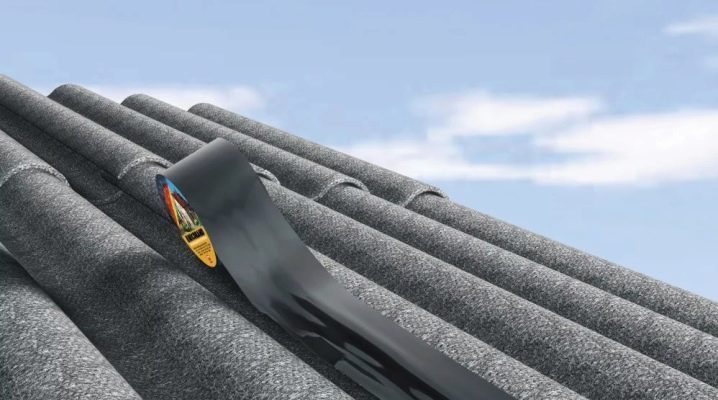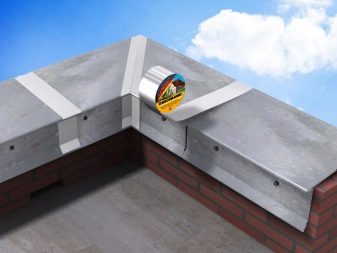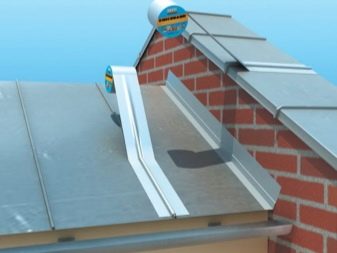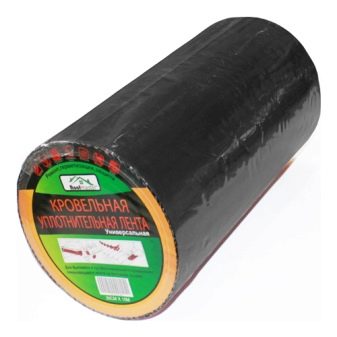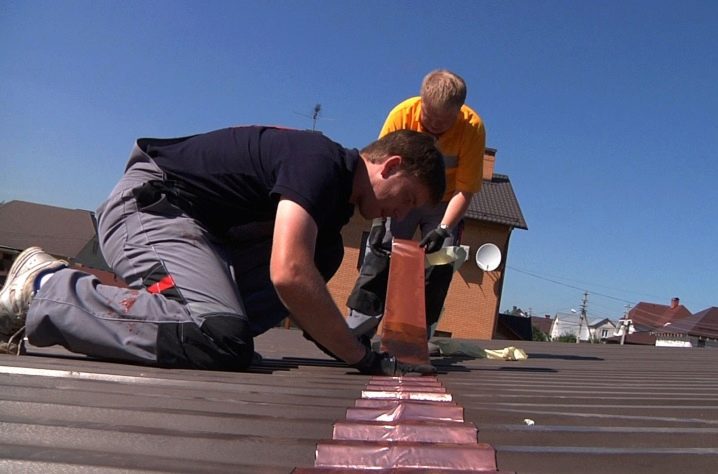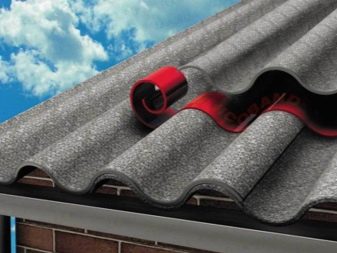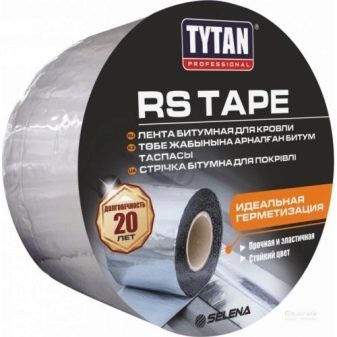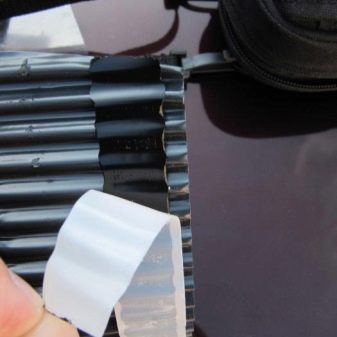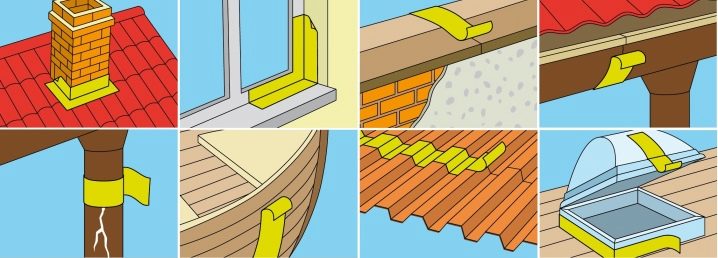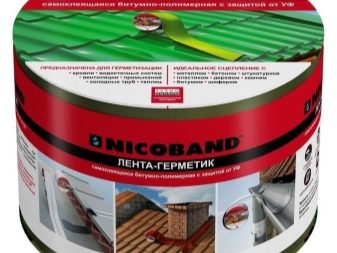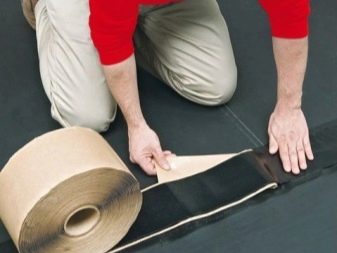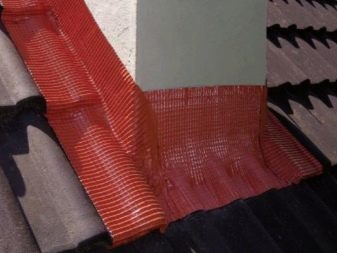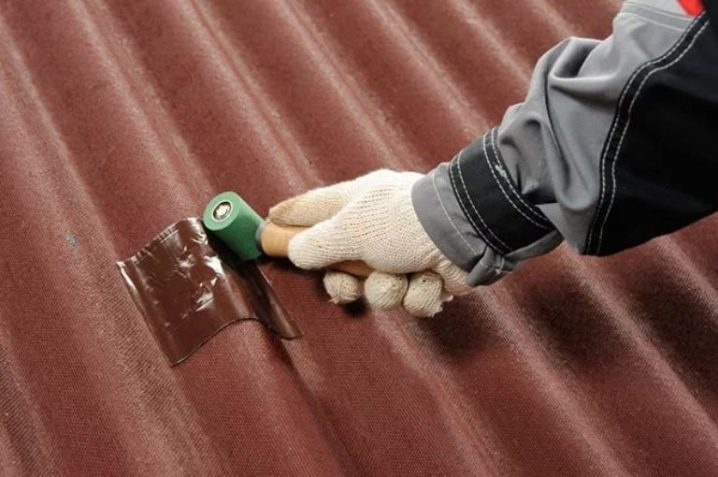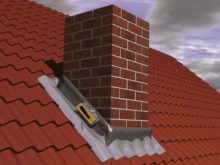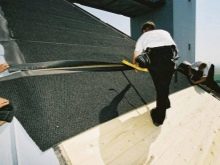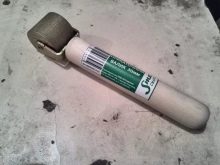What are roofing tapes and how are they used?
Work with the roof - an important task in the construction of any home. The quality and strength of the work depends on the quality of the work. The quality coverage of the building will not leak in the showers or from the melting snow. The roofing tape can help with this question. It is used for installation, for work with finishing, as well as for repairing a damaged roof.
Advantages and disadvantages
The tape on a bituminous basis which is used during the work with a roof, represents the material rolled into a roll having an adhesive layer. It is sometimes called building tape. It consists of transformed bitumen, in the manufacture of which polymers and rubber, which favorably affect the quality of impurities, are added to the quality of the impurities. The cloth turns out multilayered, over it is covered with thin protection which protects material from sunshine, a rain.
Bituminous tape is lightweight and elastic material., quite strong, having excellent waterproofing characteristics. Its properties include its adhesive layer, which is capable of fairly easily sticking to wood, metal, glass and other surfaces. Prior to use, the sticky side is temporarily protected by an interlayer that does not allow the ribbon strip in the roll to stick together.
Distinctive advantages are:
- high waterproofing;
- excellent stickiness to any surface;
- ease of handling.
No need to have any special skills to use the material. In addition, do not expect it to dry. The use of special tools for working with tape is not required. With minor violations (breaks, punctures, cuts) Scotch tape has the ability to recover. Extensive color variation makes it possible to select stripes that are suitable for the color to a certain surface.
The bituminous cloth can be used in expanded temperature frameworks from-40C to + 90C, but specifically before installation it must be kept warm. Due to its elasticity and flexibility, it can also be used during a series of installation works in places with difficult access. Sometimes bitumen tape helps where other methods of repair are useless attempts.The shelf life of this support is long and can be about 20 years, if you follow the instructions for installation and operation.
The bituminous self-adhesive tape for an adjunction, as well as any other material, is not free from shortcomings. Among them, it is possible to single out the fact that it can only be used in the air due to high toxicity. It is flammable, softens when overheated, requires the necessary preparation of the area to be pasted. However, the low cost of the canvas allows you to ignore the disadvantages of its application.
Today, a very popular ventilating copper perforated tape company Tytan Professional.
Purpose
Bituminous material is used for many types of work related to the design, processing and repair of the roof. It is a universal tool that is used to seal small holes, seal cracks, and waterproof the roof.
The main areas of use of bituminous cloth:
- construction and repair of the roof, including the processing of corner pieces and ridge;
- rust protection of metal elements;
- jamming extraneous noise generated by electrical or mechanical devices;
- Isolation of stool and seam areas of a diverse area of the roof (gap between the roof and chimney, cracks in the brick masonry);
- production of floors;
- sealing windows and doors;
- isolation of the base of the small areas and sewer reinforced concrete designs.
Bituminous tape is available in different sizes, packed in rolls. This allows the web parameters to be easier to choose for any particular occasion.
Classification
Roof strips differ in the type of material from which they are made. In the butylene specimen, the base is made from butyl rubber. This material is resistant to chemicals. Its top layer is protected from external factors with a thin foil of non-ferrous metals. This type of adhesive tape is used more often for waterproofing when installing the roof, it is considered a multifunctional raw material.
The bituminous and polymeric cloth possesses a protective surface from polyethylene. It is usually used for sealing wiring, finishing pipelines of metal, as it has a strong resistance to stress. Waterproofing fabric is mainly used to work with products made of polycarbonate.Moisture-loving swelling rubber tape, changing the state and parameters, is used at various industrial enterprises for joining certain fragments or sealing the seams between various materials. There are scotches used in the household direction. They are used to repair a house only in limited rooms and for a specific purpose.
Special features
Dealing with the bitumen strip is easy enough: no specific experience will be needed. But there are some nuances. For example, it is not recommended to lay the canvas on the untreated surface, as there is a situation in which it will not glue or will last a short time. Processing consists in diligent cleaning of the prepared materials from excess substances.
To achieve the best effect, various devices and electrical appliances are used. It is important to remove greasy areas, if any. To do this, use special tools. After cleaning, they must be allowed to dry well. Then it is necessary to remove the old treatment, if it existed. You can do it with improvised means by removing residues with a solvent.
When working with adhesive strips, it is better to use a lapping roller. With it, you can get rid of air bubbles, which in some cases are formed under the canvas in the process of installing construction tape. The remaining air bags damage the tightness, reduce the useful life of the tape. In some cases, pieces larger than 1.5 cm can be overlapped. In such situations, the moisture does not leak, will remain tightness hassle compound.
If the bitumen tape has lain in a cool place for a long time, it is necessary to warm the material to room temperature before using it.
Sealing seams
Sealing of joints between the chimney and the roof surface is done in a certain way. First, you need to carry out surface treatment, which is required to glue the bituminous sheet. To work with concrete pavement, it is necessary to use an electric grinder paired with a vacuum cleaner. After cleaning, the surface must be removed from the fat layer.
Certain tools will be required: lapping roller, knife, scissors, cloths for wiping accessories and hands during work.Before sealing the joint of the pipe with a flat coating with a bitumen strip, the pipe is wrapped to determine the desired length of the piece. At the necessary place the web makes a mark on which the required size of the tape is cut. The result is a segment, which is enough to seal the seam.
At the lower part of the canvas, scissors are cut in several places for distribution along the plane of the roof. Then, the safety material is removed from the cut piece of fabric. The ready-to-use adhesive tape is applied to the desired area, the cut-through area is glued to the surface of the roof. It is important not to forget about the formation of bubbles from the air and timely disperse them. The area glued to the pipe, well rubbed roller. In the area of the cuts, which is located on the plane of the roof, auxiliary patches are cut from the same material. They are also pressed with a roller.
For details on sealing the seams of the chimney, see below.
Application in repair
Bituminous material is excellent for sealing defects in the roof. In such works it is necessary to observe the sequence of actions.
- The section of the roof in the installation area of the bitumen cloth is thoroughly cleaned from dirt.This place can be washed with water, dried, then degreased.
- After removing the protective film, the tape is glued to the seam of the two elements of the roof, should begin with the beginning of the roof. The edges of the canvas rubbed.
- Bituminous material is gradually pressed down in the course of work with a roller. In the case of joining pieces of tape, you need to do an overlap, which should be at least 1.5 cm. In such work it is better to resort to the help of a partner, then the result will be smoother and more accurate.
In the same way pave all the seams between the individual parts of the material of the roof. Similarly, make and seal flaws in the roof.
